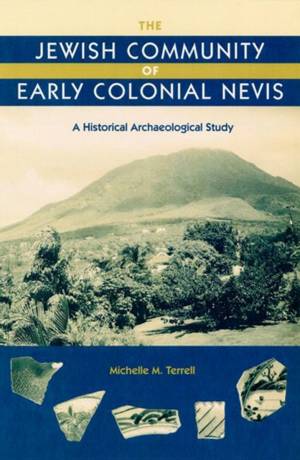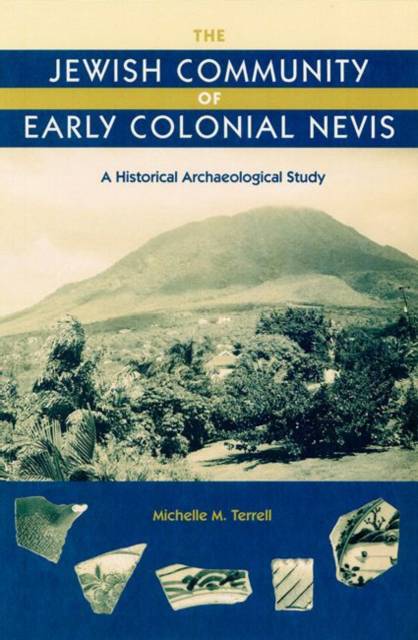
- Afhalen na 1 uur in een winkel met voorraad
- Gratis thuislevering in België vanaf € 30
- Ruim aanbod met 7 miljoen producten
- Afhalen na 1 uur in een winkel met voorraad
- Gratis thuislevering in België vanaf € 30
- Ruim aanbod met 7 miljoen producten
Zoeken
€ 83,95
+ 167 punten
Omschrijving
Two mysteries unfold in this unusual story of an archaeological investigation: What happened to the forgotten Sephardic Jews who existed 300 years ago on the island of Nevis in the eastern Caribbean? And how does an archaeologist deal with the frustrations, tribulations, and false leads of the evolving research process? In the 1990s, Michelle Terrell set out to study the Spanish and Portuguese Jewish community in Charlestown, the capital of the former British West Indian colony of Nevis. Islanders led her to a spot that traditionally had been identified as the site of a 17th-century Jewish synagogue located near an alley named "Jews Walk," which led to a cemetery with headstones bearing inscriptions in Hebrew, English, and Portuguese. After four seasons of digging, Terrell had unearthed an ample number and intriguing assortment of archaeological remains--none of them ecclesiastical or characteristic of synagogues.Terrell persisted in her efforts to pinpoint the true location of the vanished synagogue, working at odds with cherished oral traditions and with local political practices. Eventually, she was able to use archived land records to reconstruct the layout of the entire Jewish community and to identify her original excavation site as the location of a villa belonging to an English planter. As she reports here, she was also able to establish that the Nevis Jews were a vibrant and important enclave within the British West Indies, to compare their community to other colonial-period Jewish enclaves on other Caribbean islands, and to place them within the global context of the Sephardic diaspora. Her work challenges the views of past scholars who have portrayed the Caribbean islands as peaceful havens for Iberian Jews who fled the Spanish Inquisition, suggesting instead that Jewish daily life in British colonial society was constantly challenged and under pressure. Terrell's innovative account of her documentary expedition provides both an astute professional appraisal of a Jewish Caribbean community and a lively personal record of her pursuit of multiple lines of evidence. Readers who view this saga over her shoulder will discover a rich picture of how historical archaeologists do their jobs.
Specificaties
Betrokkenen
- Auteur(s):
- Uitgeverij:
Inhoud
- Aantal bladzijden:
- 208
- Taal:
- Engels
- Reeks:
Eigenschappen
- Productcode (EAN):
- 9780813027869
- Verschijningsdatum:
- 31/12/2004
- Uitvoering:
- Hardcover
- Formaat:
- Genaaid
- Afmetingen:
- 160 mm x 236 mm
- Gewicht:
- 421 g

Alleen bij Standaard Boekhandel
+ 167 punten op je klantenkaart van Standaard Boekhandel
Beoordelingen
We publiceren alleen reviews die voldoen aan de voorwaarden voor reviews. Bekijk onze voorwaarden voor reviews.











